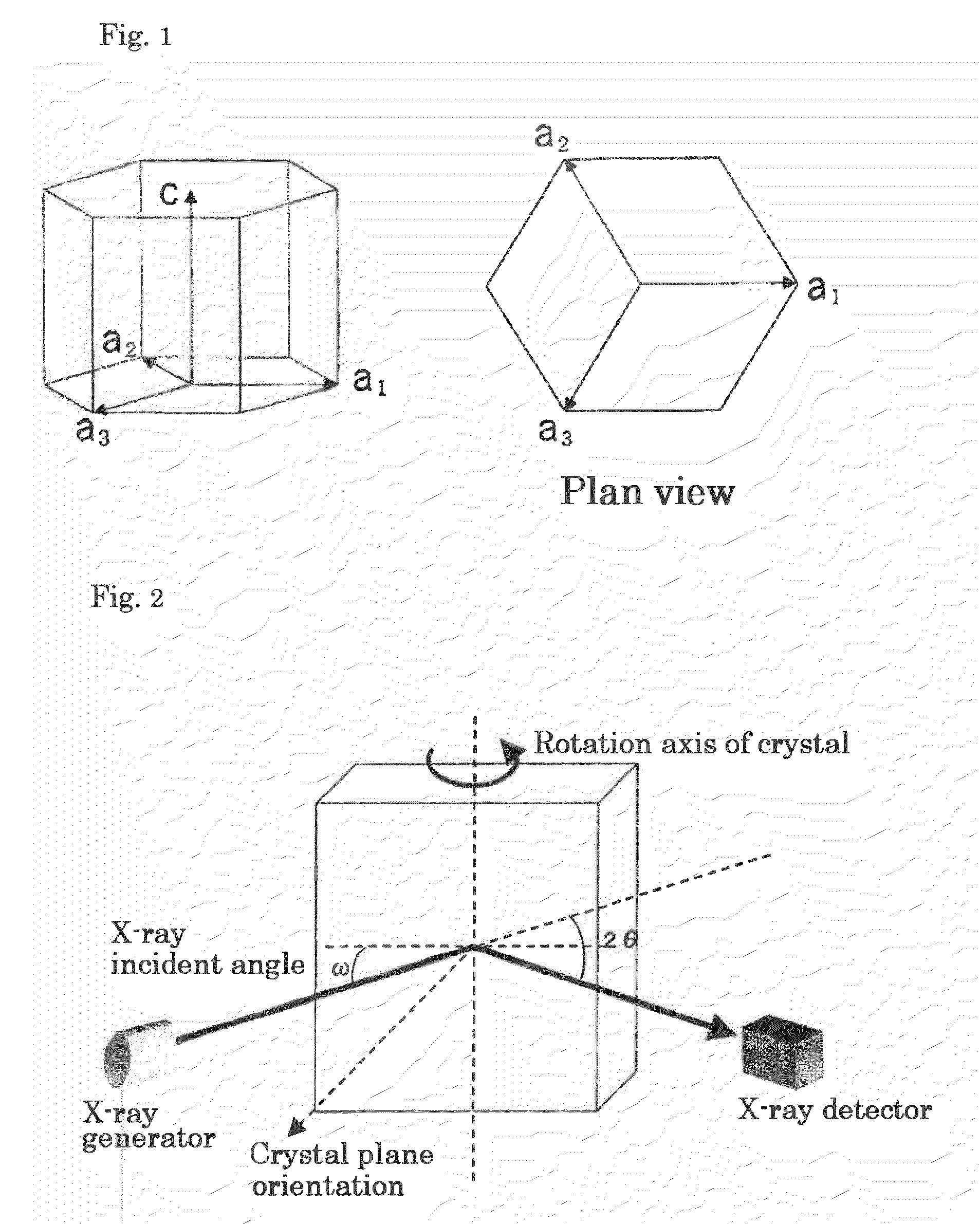Group iii-v nitride layer and method for producing the same
a nitride layer and group iiiv technology, applied in the direction of polycrystalline material growth, crystal growth process, vacuum evaporation coating, etc., can solve the problem of no suitable process for crystal growth, and achieve high quality, improve the properties of a semiconductor device, and improve the crystallinity
- Summary
- Abstract
- Description
- Claims
- Application Information
AI Technical Summary
Benefits of technology
Problems solved by technology
Method used
Image
Examples
examples
[0202]There will be further detailed the present invention with reference to Examples. In the following description, the flow chart in FIG. 4 is referred as appropriate. First, an example of m-plane growth will be described.
example a-1
[0203]A ZnO substrate 11 having (1-100) plane as a principal surface was annealed at 1250° C. for 3.5 hrs in the planarization step S11. FIG. 7A shows an atomic force microscopy image after the planarization and, for comparison, FIG. 7B shows an atomic force microscopy image before the planarization. After the planarization, an atomic layer step was observed.
[0204]Then, the above planarized ZnO substrate was introduced into a PLD apparatus, and a GaN layer 13 as a first layer was then deposited in the low temperature deposition step S12 (the first sub-growing step). In the low temperature deposition step S12, the target 32 was made of Ga metal (purity: 99.99%). The target 32 was placed in parallel with (1-100) plane of the ZnO substrate 11. A RF radical source was used as a nitrogen source at 300 W, and a growth pressure was 3×10−6 Torr.
[0205]A pulse frequency of a pulse laser beam outgoing from a KrF excimer laser 33 was 30 Hz, an irradiation time per 1 pulse was 20 ns, and a laser...
example a-2
[0209]Deposition was conducted as described in Example A-1, except that in the low temperature deposition step S12, a RF radical source as a nitrogen source was used at 400 W, a substrate temperature was 320° C., a growth rate was 53 nm / hr, a growth film thickness was 13 nm; and in the high temperature growth step S13, a laser power at the point of target irradiation was 0.93 W and a substrate temperature was 690° C. The layer was grown to a thickness of about 300 nm. A growth rate was about 300 nm / hr. The resulting layer was evaluated as described in Example A-1. Table 1 shows the growth conditions and Table 2 shows the evaluation results for the film obtained.
PUM
| Property | Measurement | Unit |
|---|---|---|
| thickness | aaaaa | aaaaa |
| thickness | aaaaa | aaaaa |
| temperature | aaaaa | aaaaa |
Abstract
Description
Claims
Application Information
 Login to View More
Login to View More - R&D
- Intellectual Property
- Life Sciences
- Materials
- Tech Scout
- Unparalleled Data Quality
- Higher Quality Content
- 60% Fewer Hallucinations
Browse by: Latest US Patents, China's latest patents, Technical Efficacy Thesaurus, Application Domain, Technology Topic, Popular Technical Reports.
© 2025 PatSnap. All rights reserved.Legal|Privacy policy|Modern Slavery Act Transparency Statement|Sitemap|About US| Contact US: help@patsnap.com



